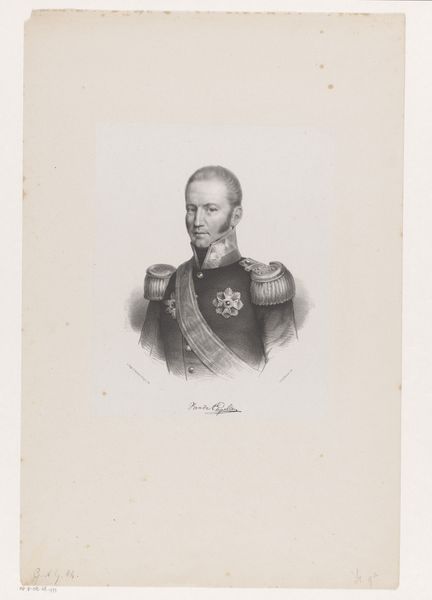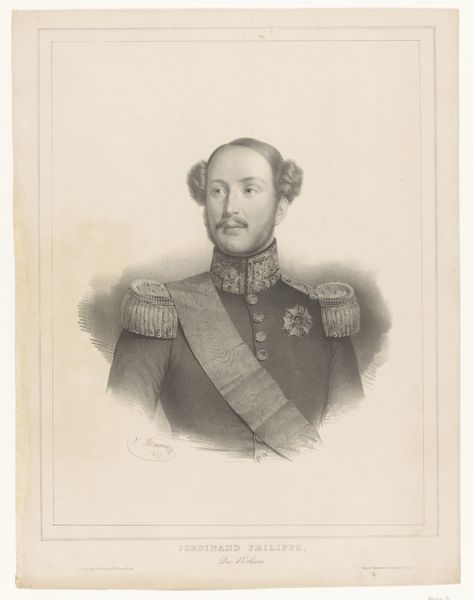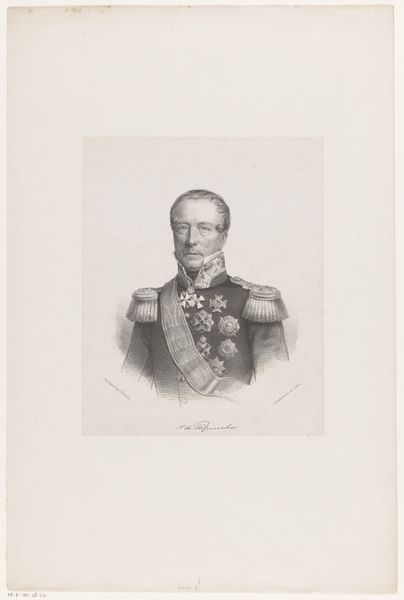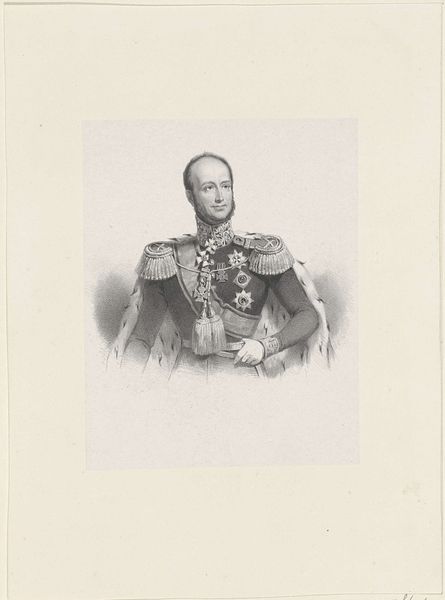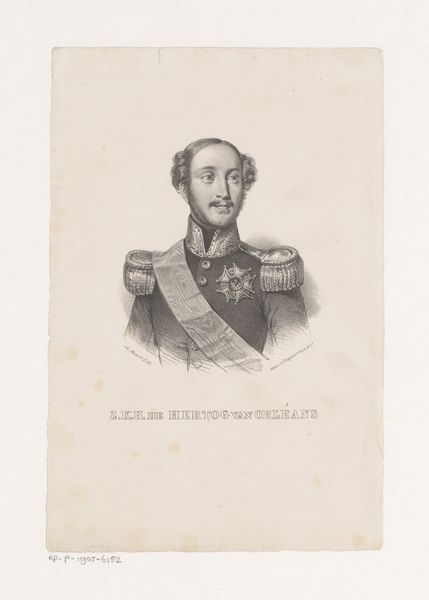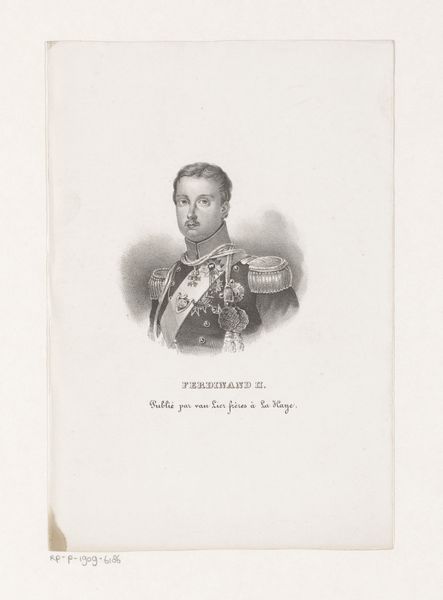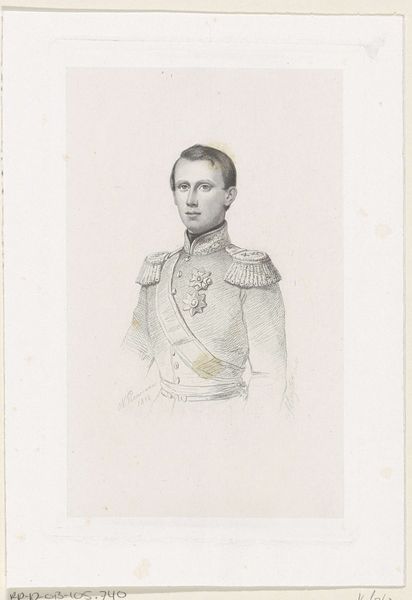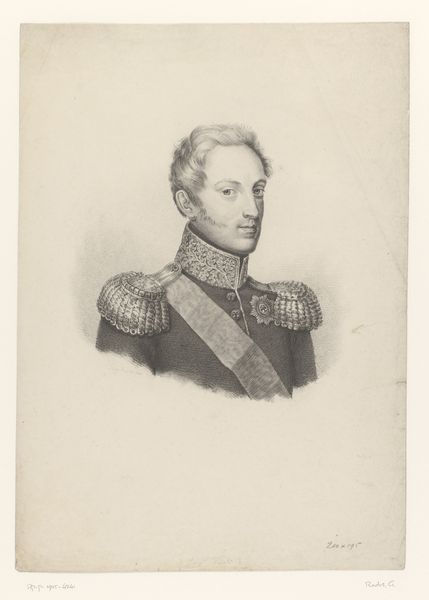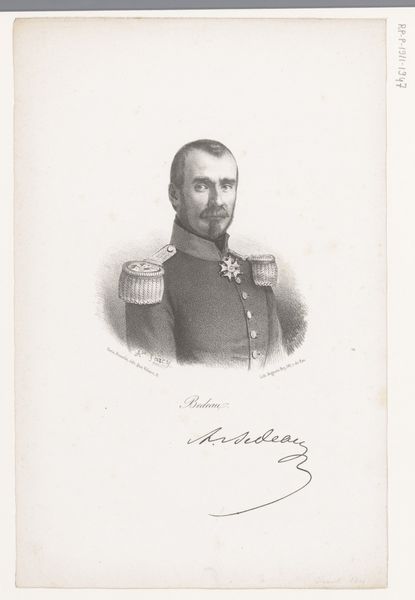
drawing, pencil
#
portrait
#
drawing
#
16_19th-century
#
pencil sketch
#
pencil
#
pencil work
#
watercolour illustration
#
academic-art
#
realism
Dimensions: height 274 mm, width 183 mm
Copyright: Rijks Museum: Open Domain
Curator: This pencil drawing depicts Bernard Pierre Magnan, a general who lived between 1848 and 1911, brought to life by Alphonse Farcy. What’s your initial reaction to this work? Editor: Austere. The sharp pencil lines create a formal air. The composition, though simple, is undeniably powerful. Curator: Power is a key element here. Magnan is portrayed with all his medals and military garb. This imagery places him squarely within the narratives of 19th-century European power structures. Medals are powerful signs, signifying a reward from recognized achievements. But whom do these achievements serve, and who benefits from his station? Editor: The medals strike me as more than mere status symbols. The circular shapes evoke celestial bodies—suns or stars, symbols of leadership, guidance, and perhaps even divine right. His achievements could have benefitted himself, or were supposed to better society. It depends on perspective. Curator: Interesting point about the celestial symbolism. I tend to see them more as instruments of the military-industrial complex, awards which are part of a broader framework of service and often sacrifice. Looking at this portrait today, we can engage with his story from multiple intersecting vantage points: socio-economic status, racial politics, and cultural expectations. Editor: True, but those stars pinned to his chest also shine with potential, the potential to defend or lead. The question is, did Magnan’s actions align with such noble symbolism? How do those symbols align with historical acts? Symbols are only potent if those who are exposed to them perceive them to have relevance. The choice to portray him with these medallions in such precise detail surely reflects the importance of their perceived values, at the time. Curator: And their perceived value speaks volumes about the era’s worldview. By understanding these symbolic choices, we can dissect how narratives are built around figures of authority and influence. His posture alone signifies rank. Editor: Indeed. Considering that many military symbols carry specific cultural and psychological associations, the symbolism could act as an invitation or an announcement—a means of inviting collaboration or imposing control. It is easy to forget this when we see symbols every day. Curator: Absolutely. It’s critical to look at symbols in the art to start bigger discussions about values in history. Editor: Precisely. And it’s through understanding historical contexts through their visual grammar that we gain better understanding of its people.
Comments
No comments
Be the first to comment and join the conversation on the ultimate creative platform.

